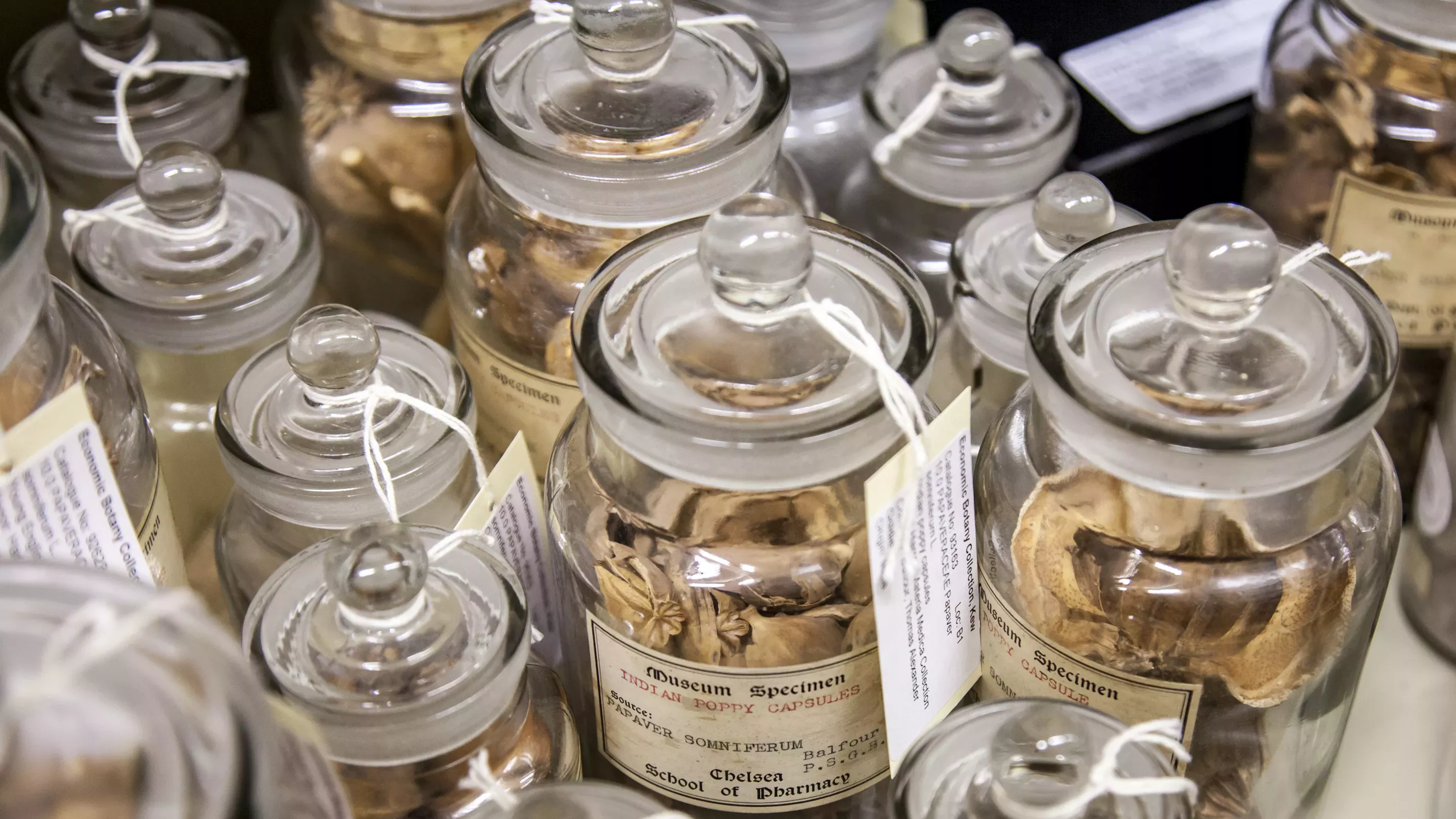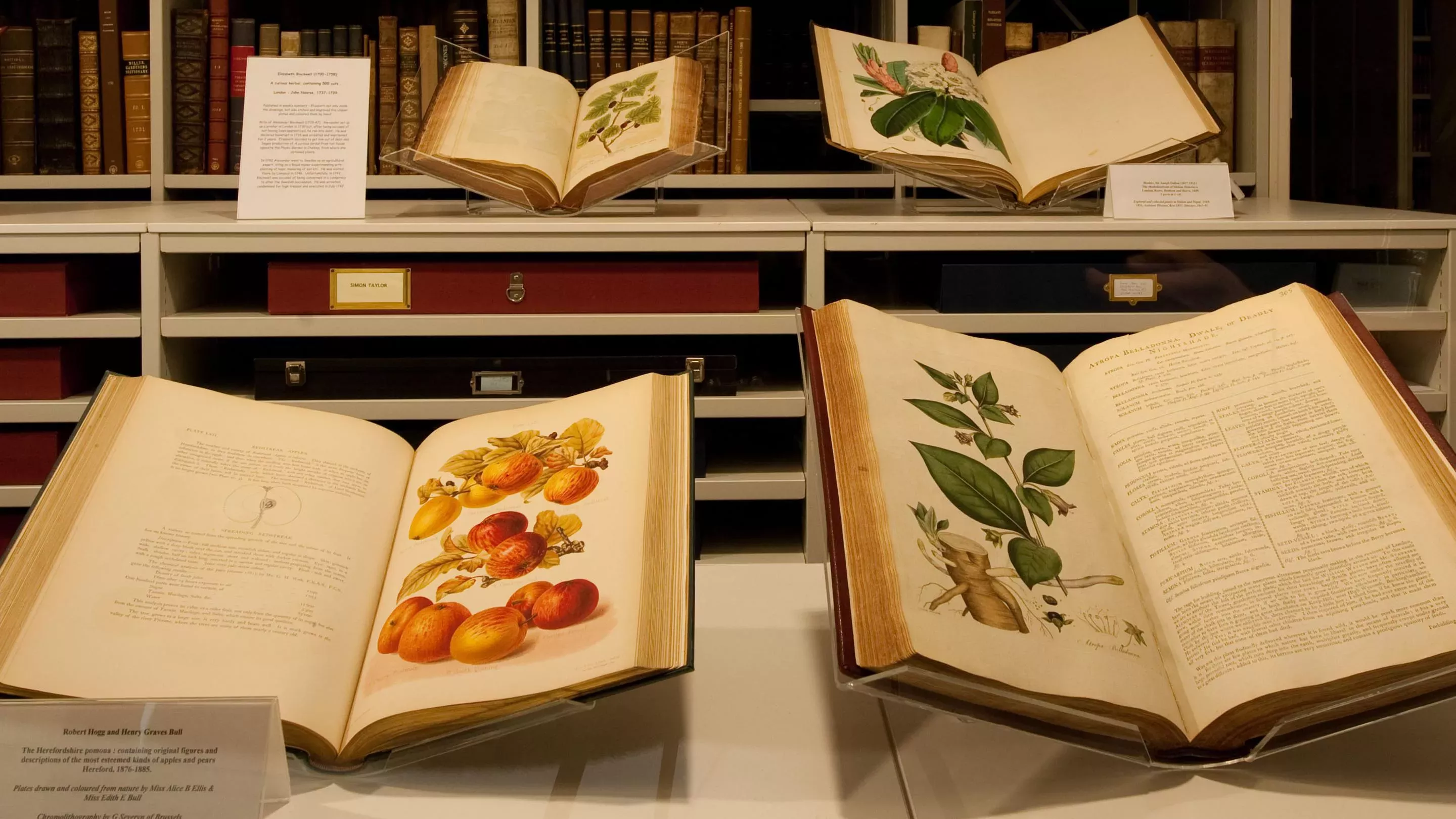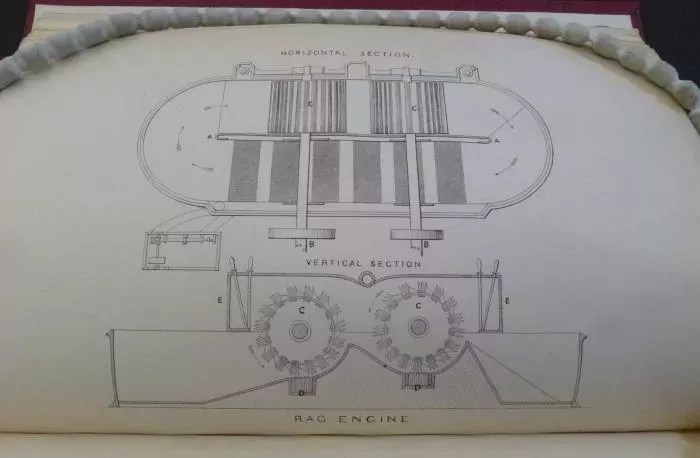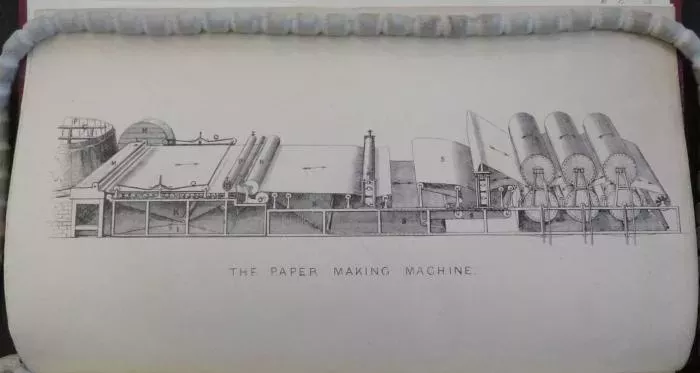2 June 2018
Meta-paper
A library blog on books about paper might sound like the setup to a cringeworthy librarian joke, but it turns out that paper is a rather important commodity at Kew.

Economic botany
Paper is an important topic in economic botany, which is itself an important area of research at Kew. Economic botany can loosely be defined as the study of the utilisation of plants by people. This covers a vast range of subjects, from medicinal herbs that can be used to make powerful drugs, to the selection and use of materials for weaving baskets for example. Kew's economic botany collection comprises some 100,000 objects, 10,500 books and well over 500 journal titles totalling over 7,400 parts.

Books about paper
Recently accessioned into the library collections were several books about paper. These titles, now on display in the Library, Art and Archives reading room, include an intriguing book called 'Ancient Paper of Nepal', a PHD thesis by Jesper Trier, which contains colour and monochrome woodprints printed on hand-made Tibetan paper, and a beautifully presented, boxed book called 'Gifts of the Conquerors: Hand papermaking in India', by Alexandra Soteriou.


Gems in the store
All these books about paper got me thinking, so I headed for the catalogue to see what else I could find. And out of many books on paper in the library collections, I found some absolute gems in the rare books collection. I picked two of the most interesting examples, one of which has lovely, almost steam-punky illustrations, and one which is just unique.
'Paper and papermaking: ancient and modern', by Richard Herring (born c.1829), is a great little book published in 1855. Based on lectures delivered by Herring at the Royal Institution, the work contains several high-quality illustrations of mid-nineteenth century paper-making machinery. For example, the rag engine literally beat rags to pulp so that the resulting mush could be transformed into paper.


Next, we have the paper making machine, an intricate, and probably slightly hazardous machine that forms the paper sheet itself, and fnally, and my favourite: the cutting machine, which looks a bit like the skeleton of a steam-punk horse in profile.
There are some samples bound towards the back of the book: some coloured papers and a lot of water-marked pieces. Unfortunately, it's impossible to capture the intricate details of the water-marked pages, so I'll have to leave those to your imagination (but they really are impressive!).

Paper specimens
The other book that snagged my attention is catchily entitled: 'Specimens of paper made of vegetable materials presented to Sir William Jackson Hooker F.R.S., Vice President of the Linnean Society and Director of the Royal Gardens Kew for the Museum of Economic Botany which Sir William has formed in connexion with that establishment'.
Another unique book is hand lettered with elaborate calligraphy, and obviously has a very strong connection to Kew, having been presented to Sir William Jackson Hooker, Director of the Royal Botanic Gardens, Kew from 1841–1865.
The table of contents is also hand-lettered and shows that pages 1–23 are made from flax, 24–46 of cotton, 47–69 of flax and cotton mixed, and 70–85 of straw with a small mixture of hemp. The last section is quite striking because half of the pages are very stiff and have a rough texture, and the other half are incredibly fine and delicate, like tissue paper.
Samples
All the pages are blank apart from the number in the top-right corner, but they are in excellent condition for their age. I can't imagine the pages of a modern hardback looking so good after over 150 years (never mind a paperback), but I suppose this book hasn't been particularly heavily read!

- Andy Farquhar -


